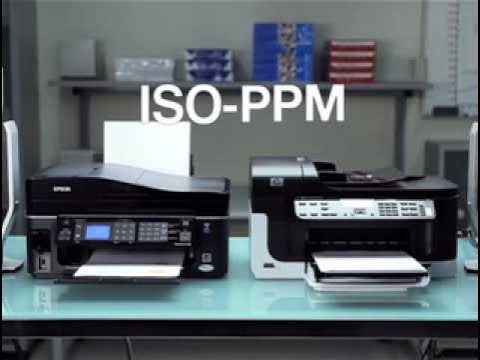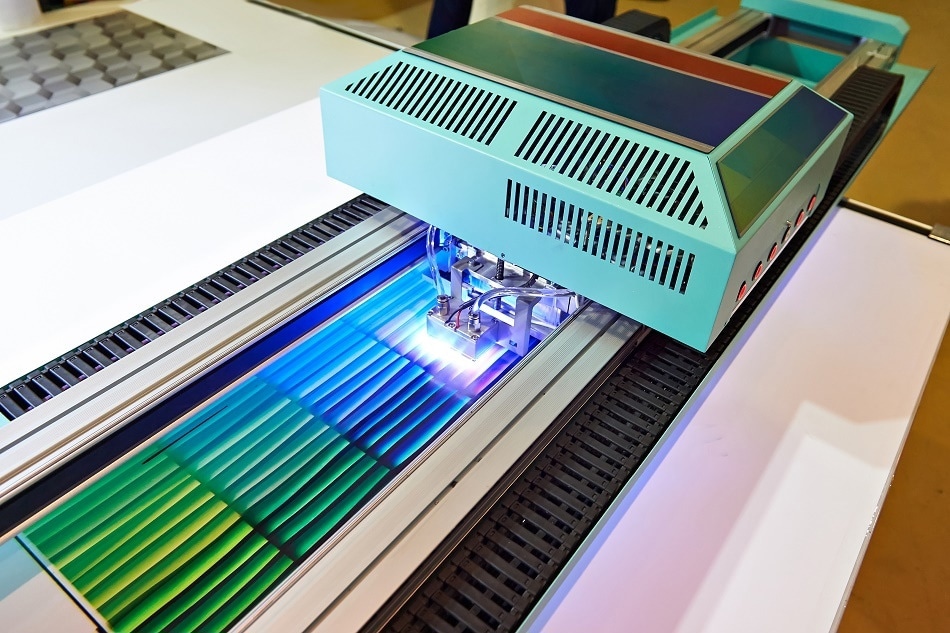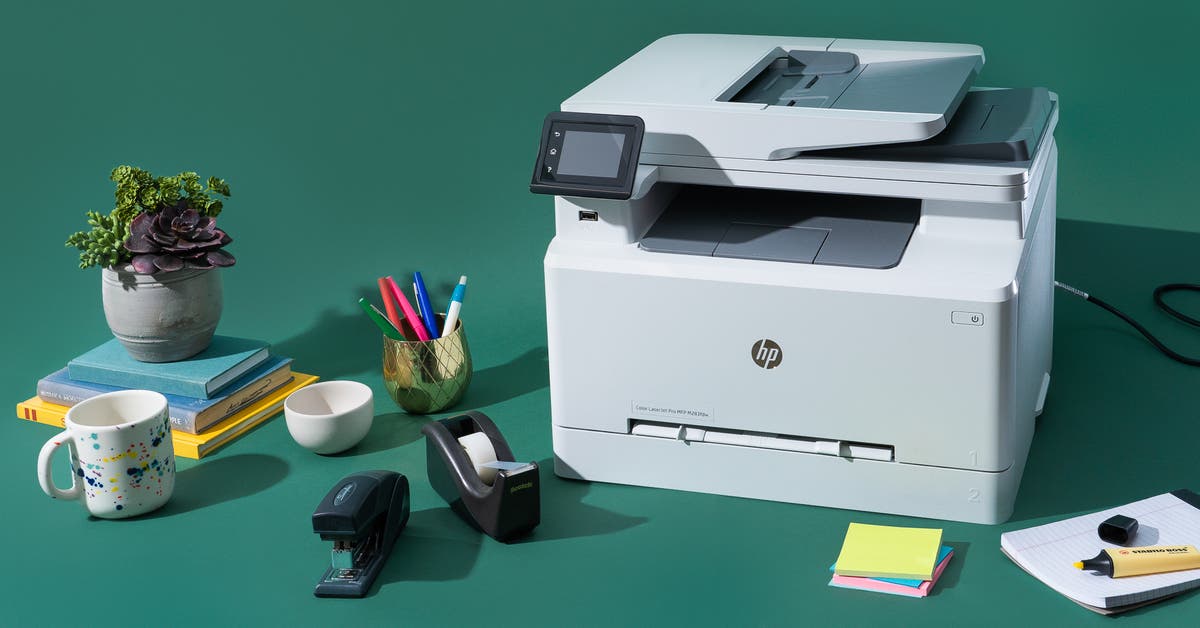Understanding Printers: Comprehensive Guide to Main Types of Printers
Introduction
Do you often feel overwhelmed by the multitude of printer options available? This comprehensive guide will empower you to make an informed decision by expanding your understanding of the main types of printers. You will learn about their unique features, how they have evolved over time, and how to choose a model that best suits your specific needs while being mindful of the environment.
What Comprises the World of Printers?
Printers are omnipresent and play an indispensable role in our daily lives. They come in distinct forms which cater to diverse applications, ranging from home use to high-tech industry requirements. Here is an overview of these various categories:
1. Inkjet Printers: These versatile printers are known for their high-quality output in both color and monochrome prints.
2. Laser Printers: Chosen for their high-speed and superior text quality, these tend to be perfect for high-volume printing.
3. Dot-Matrix Printers: A classic, dot-matrix printers are famed for their durability and low operating cost but are less common in modern applications due to their noise and quality.
4. 3D Printers: The latest technology on the block, 3D printers transform digital design into physical objects, revolutionizing manufacturing processes.
When purchasing a printer, it's crucial to understand not only their unique features but also their environmental impacts, to make a conscious, informed choice.
How Have Printers Evolved Over Time?
Making sense of the printer landscape involves understanding its evolution. Progress in printing tech has been remarkable:
- From Bulky to Compact: Initially, printers were cumbersome, noisy, and pricey, tailored primarily for commercial use. Today, the technology has evolved into sleek, quiet and affordable machines, suited for personal and professional use.
- Monochrome to Colored Prints: Early printers like the dot matrix, offered only black and white prints. However, inkjet printers and laser printers ushered in an era of high-resolution colored prints, setting new standards in print quality.
- Two Dimensions to Three: The most revolutionary development in printing tech is 3D printing. No longer limited to flat images on paper, modern printers can create detailed objects in 3D with just a click.
The printers available today are sophisticated devices, a far cry from their earlier adaptations, aimed at meeting diverse needs and applications.
What Are the Main Types of Printers and Their Unique Characteristics?
Let's dive into the fascinating domain of diverse printer types and explore their unique attributes.
Inkjet Printers: Unraveling their Mystique
Inkjet printers work their magic by jetting minuscule drops of ink onto the paper, creating crisp and vibrant images.
- For home users and small businesses, inkjet printers offer a budget-friendly choice.
- They are versatile and capable of producing high-quality color and monochrome prints.
- However, the cost per printed page can be higher due to the need for frequent ink replacements.
Enroute the Lightning-Fast Territory of Laser Printers
Laser printers utilize static electricity to attract toner particles onto the paper, resulting in precise text and graphics.
- These printers stand out for their speed and efficiency, especially for large volume printing tasks.
- They yield supreme text quality, surpassing that of inkjet printers.
- Although a laser printer's initial cost could be steeper, the cost per printed page is relatively lower.
The Dot Matrix Printers: A Blast from the Past
Dot matrix printers employ a grid of tiny pins to render meticulous dot patterns on the paper.
- They are celebrated for their endurance and via the continuous printing ability, they are ideal for invoices and receipts.
- They execute their tasks with a low operational cost.
- However, due to their noise generation and lower print quality compared to the modern printers, they are considered outmoded for many current applications.
The Dawn of 3D Printers: Stepping into the Future
3D printers have revolutionized the industry, turning digital 3D models into solid objects via successive layers of material.
- They have opened a whole new world in manufacturing, healthcare, and even culinary arts.
- The ability to create intricate and personalized designs is one of their strongest suits.
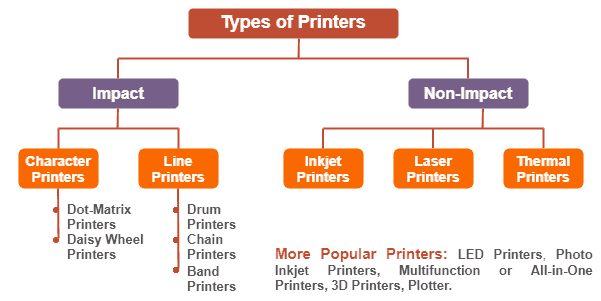
- Their application is still emerging, and the cost can be prohibitive for casual users, but they are truly a glimpse into the future of printing.
Which Type of Printer is Best Suited for Your Specific Needs?
Choosing the right printer largely depends on your printing needs, budget, and preferred quality. Whether you plan to use it for personal, commercial, or academic purposes, understanding the functionality and features of the different types of printers can equip you to make an informed decision. Here are the key characteristics of the main types of printers:
Inkjet Printers
- Versatility is their forte: Inkjet printers are renowned for their ability to handle different types of print media such as paper, photo paper, fabric, and even CDs.
- Quality prints: They can produce high-quality color and monochrome prints, making them an excellent option for photo printing.
- Cost-effectiveness: With a relatively low initial price compared to laser printers, they are perfect for those who don't require high-volume printing.
Laser Printers
- Speed and efficiency: Laser printers are the frontrunners when it comes to high-volume printing. Notably faster than their inkjet counterparts, they boost productivity in busy offices.
- Superior quality: They offer superior text quality, ideal for professional environments that prioritize crisp and clean prints.
- Long-term cost-effectiveness: While the initial cost is high, they have a lower cost per page, making them a more economically efficient choice in the long run where large amounts of printing are required.
Keep in mind that the right printer for you depends on your intended use, the volume of prints required, your available space for printer storage, and your budget. Hence, your decision should be driven by an accurate understanding of your specific needs and a comprehensive awareness of the printers' capabilities and constraints.
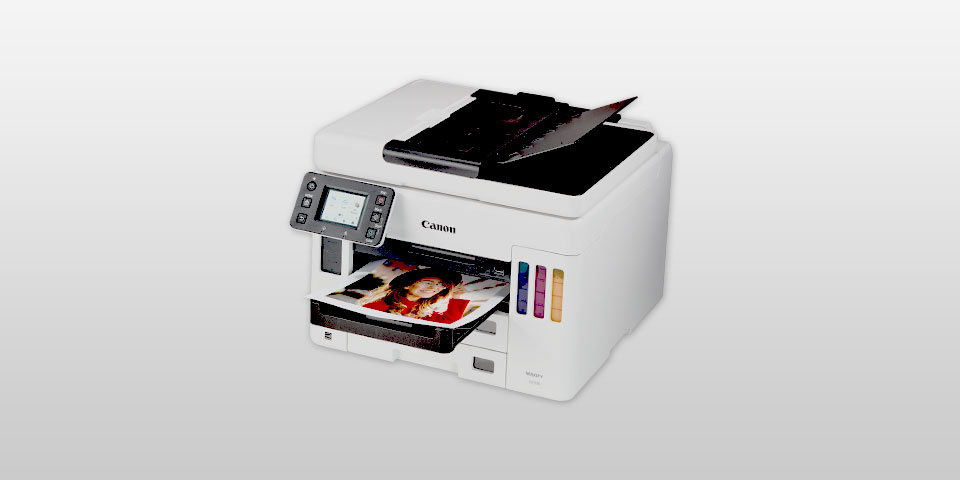
How to Make an Environmentally Conscious Choice When Selecting a Printer?
When you’re seeking to purchase a printer, it’s necessary to not only consider its convenience, print quality, speed, and cost but also its environmental impact. Although significant strides have been made in printer technology, the industry's carbon footprint is still a critical concern. Here’s how you can make environmentally conscious choices when buying a printer.
Evaluating the Energy Efficiency
First, consider energy efficiency – more efficient printers use less electricity, thus reducing CO2 emissions and lowering your energy bills. Look for printers with an Energy Star rating – a globally recognized symbol for energy efficiency. Statistics show that Energy Star-rated devices can save at least 30% of energy compared to non-rated ones.
Considering Recyclability and End-of-Life Management
Many printer manufacturers now have robust recycling programs, either taking back the used printer or cartridges for recycling or suggesting local recycling amenities. To make a green purchase, make sure to check out the manufacturer's recycling policy or programs.
Assessing the Impact of Consumables
Frequently replaced ink cartridges contribute to the wasteful side of printers. Therefore, consider printers with high-yield cartridges or continuous ink systems, which require fewer cartridge changes and create less waste. Incrementally, some laser printers have an all-in-one cartridge that includes a drum, lowering electronic waste when replaced.
Paper Waste Minimization
Some printer models now offer features like double-sided printing or multiple pages per sheet options, that can considerably save paper. Remember, less paper usage means fewer trees cut down, and less energy used in paper manufacturing.
Measuring Noise Pollution
Printers also contribute to noise pollution, especially in small office spaces. Though often overlooked, it's important to consider noise levels when buying a printer. Laser printers are generally more silent compared to their noisy counterparts like dot matrix printers.
By considering these factors, you'll be able to contribute to a healthier and cleaner environment, emphasizing the significance of environmentally responsible technology usage. This also often results in cost savings in the long run, making it a win-win scenario.
Conclusion
Dot matrix printers use a matrix of tiny pins to produce meticulous patterns of dots on the paper. Known for their durability and low operating cost, they are perfect for printing invoices and receipts, primarily in retail and banking sectors. They are, however, considered outdated for many modern applications due to their noise, speed, and quality of prints.
Related FAQs about what are the main types of printers
What is the difference between an inkjet and a laser printer?
Inkjet printers work by spraying microscopic amounts of ink onto paper, delivering vibrant colors and accurate images making them ideal for quality photo printing. In contrast, laser printers use toner, a powder type, and heat to produce prints. They provide high-speed printing with superior text quality, making them perfect for high-volume print tasks.
How does a 3D printer work?
3D printers work on a process called additive manufacturing. They create three-dimensional objects by depositing materials, often plastic or metal, layer by layer following a digital model’s design. This technology is widely used in industries like manufacturing, healthcare, and design for creating prototypes, parts, and customized items.
Are some printers more environmentally friendly than others?
Yes, some printers are more environmentally friendly than others. Energy-efficient models that have received an Energy Star rating use less electricity. Moreover, printers that allow for two-sided printing or use high yield cartridges result in less waste. Also, brands that offer robust recycling programs contribute to environmental sustainability.


